European Railway Traffic Management System (ERTMS) Presentation
ERTMS is a major industrial project developed by eight UNIFE members – Alstom Transport, Ansaldo STS, AZD Praha, Bombardier Transportation, CAF, Mermec, Siemens Mobility and Thales – in close cooperation with the European Union, railway stakeholders and the GSM-R industry.
What is ERTMS?
The European Rail Traffic Management System (ERTMS) is a European cab-based signaling and train control system that offers significant capacity and performance benefits, as well as further enhancing safety beyond the capability of legacy ATP systems.
How does ERTMS work?
* ERTMS consists of two primary components.
* ETCS (European Train Control and Command System).
* GSM-R: (the radio communications system to send information to the train).
* ETCS:- The European Train Control System, is an automatic train protection system (ATP) to replace the existing national ATP-systems.
* GSM-R:- A radio system for providing voice and data communication based on standard GSM using frequencies specifically reserved for rail application with certain specific and advanced functions.
ERTMS Benefits
* Increased capacity ERTMS reduces the headway between trains enabling up to 40% more capacity on currently existing infrastructure;
* Higher speeds: ERTMS allows for a maximum speed of up to 500 km/h;
* Higher reliability rates: ERTMS may significantly increase reliability and punctuality, which are crucial for both passenger and freight transport;
* Lower production costs: one proven, harmonized system is easier to install, maintain and manufacture making railway systems more competitive;
* Reduced maintenance costs: With ERTMS level 2, trackside signaling is no longer required, which considerably reduces maintenance costs;
Improved safety for passengers
What is the safety case for ERTMS?
ERTMS works as a safety monitoring system, continuously supervising the speed of each train according to track and train data. If the actual train speed exceeds the permitted data, brakes are applied automatically. This ensures the train will be stopped in front of the danger point.
Signaling levels
* The ERTMS “levels” define different uses of ERTMS as a train control system:
* Track to train communications (Level 1)
* Continuous communications between the train and the radio block center (Level 2),
* Moving block technology (Level 3, which is in a conceptual phase).
Level 1
Level 2
Level 3
* ERTMS Level 3, still in its conceptual phase, allows for the introduction of a “moving block” technology.
* With ERTMS level 3, accurate and continuous position data is supplied to the control centre directly by the train, rather than by track based detection equipment. As the train continuously monitors its own position, there is no need for “fixed blocks” – rather the train itself will be considered as a moving block.
Trackside SUBSYSTEM
LEU
* The LEU (Lineside Encoder Unit) is the safe equipment that interfaces between the Interlocking and other external system, and the switchable Eurobalises installed on the track.
* This equipment is able to interface with several switchable Eurobalises at the same time. It sends the suitable predefined ERTMS/ETCS messages, according to the information received from the Interlocking or external system.
Balises
* It is mainly used for train location management. It’s mainly used to provide trains with the needed information for the relocation on board function and to inform the RBC at the station facility about train positions via position reports.
EVC
EVC (European Vital Computer) is the on-board computer, which safely processes the trainborne functions on the basis of the:
* information received from the wayside equipment
* data coming from on-board sensors
* EVC is physically placed on board through the rack like the one just shown. The driver can interface with EVC trough the DMI (Driver Machine Interface).
DMI
* The DMI is the main means of interaction between the driver and the system. It is used to:
* display signals and indications via a monitory in every driver cab;
* acquire entered data end enable specific functions via a series of keys and buttons;
* achieve technical interoperability on the driver side.
Odometry subsystem
* The Odometry is a technique for estimating position and speed of a vehicle on wheels, based on information from sensors for the measurement of the covered distance. An odometer measures the covered distance of a vehicle by sensing the rotations of its wheels.

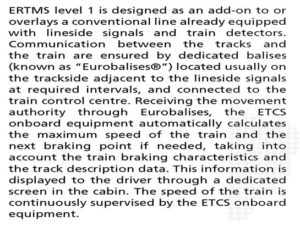
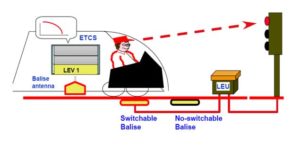
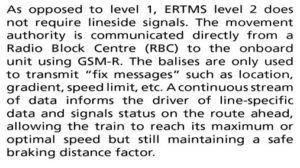

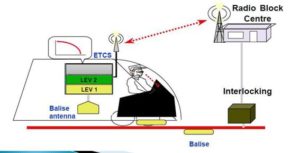
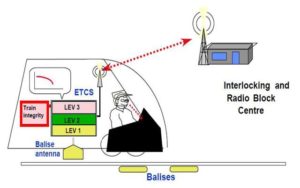
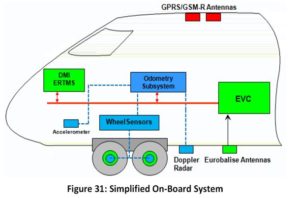
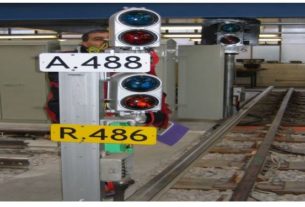
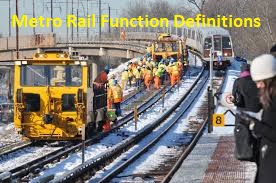
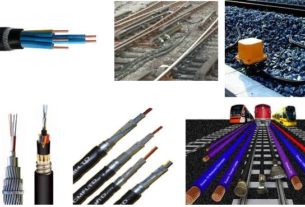
AXLE BOX DEMPRETURE